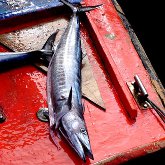Are Women Fishing? You Better Believe It!
February 9, 2012How to Catch More Trout: Understanding and Simplicity are Key
February 22, 2012Have you ever heard someone say that they prefer unfishy fish? That kind of dietary preference is more common than you might think, which is why mild white-fleshed fish have become such a popular suppertime staple. Tilapia falls into the unfishy fish category and is now the fifth most eaten species in the United States. In addition to its unassuming flavor that tends to take on the characteristics of the sauce in which it is served, it’s also relatively cheap. And on top of all of that, farmed tilapia is also an eco-friendly fish and low contaminant fish according to Oceans Alive and National Geographic’s Green Guide, so it can be eaten in good conscience. All this love for tilapia hasn’t stopped people from wondering what do tilapia eat, however, and looking for tilapia facts to make sure they are actually as safe as is claimed.
So we thought we’d clear up some common misconceptions about what do tilapia eat and offer up some tilapia facts that you may find reassuring next time you’re in the seafood section of the grocery store.
- Unlike certain other fish, farm raised tilapia – and you’re unlikely to find any other sort – don’t build up environmental pollutants in their flesh and they aren’t contaminated with mercury. Co-Op America puts them squarely on the safe seafood list.
- What do tilapia eat in nature? A wide variety of natural organisms, from plankton to green leaves to invertebrates to larva to… detritus. Many theories have been put forth about the tilapia’s eating habits as related to other fishes’ excretion habits. Yes, tilapia eat poop.
- A 3.5 oz. serving of tilapia contains a mere 98 calories, but provides 18.5 grams of protein. Tilapia fillets contain no saturated fats or cholesterol. In fact, this fish contains five times less fat than the leanest pork and forty times less fat than bacon.
- Tilapia originated in the Nile River, and there are records of King Tut cultivating, to some degree, this fish. Now, tilapia can be found all over the world due to tilapia escaping from fish farms and voluntary release programs. In some areas, these fish are considered a pest.
- Tilapia are sometimes called St. Peter’s Fish because it is believed that tilapia was the fish that Peter caught in Matthew 17:24-27. Some will recall that this particular tilapia had a shekel coin in its mouth.
- When you buy perch or whitefish, you may actually be purchasing tilapia. Creative naming lets retailers sell fish for a higher price or remove some of the stigma sometimes attached to this fish – which in many areas of the world is considered ‘poor man’s food’.

